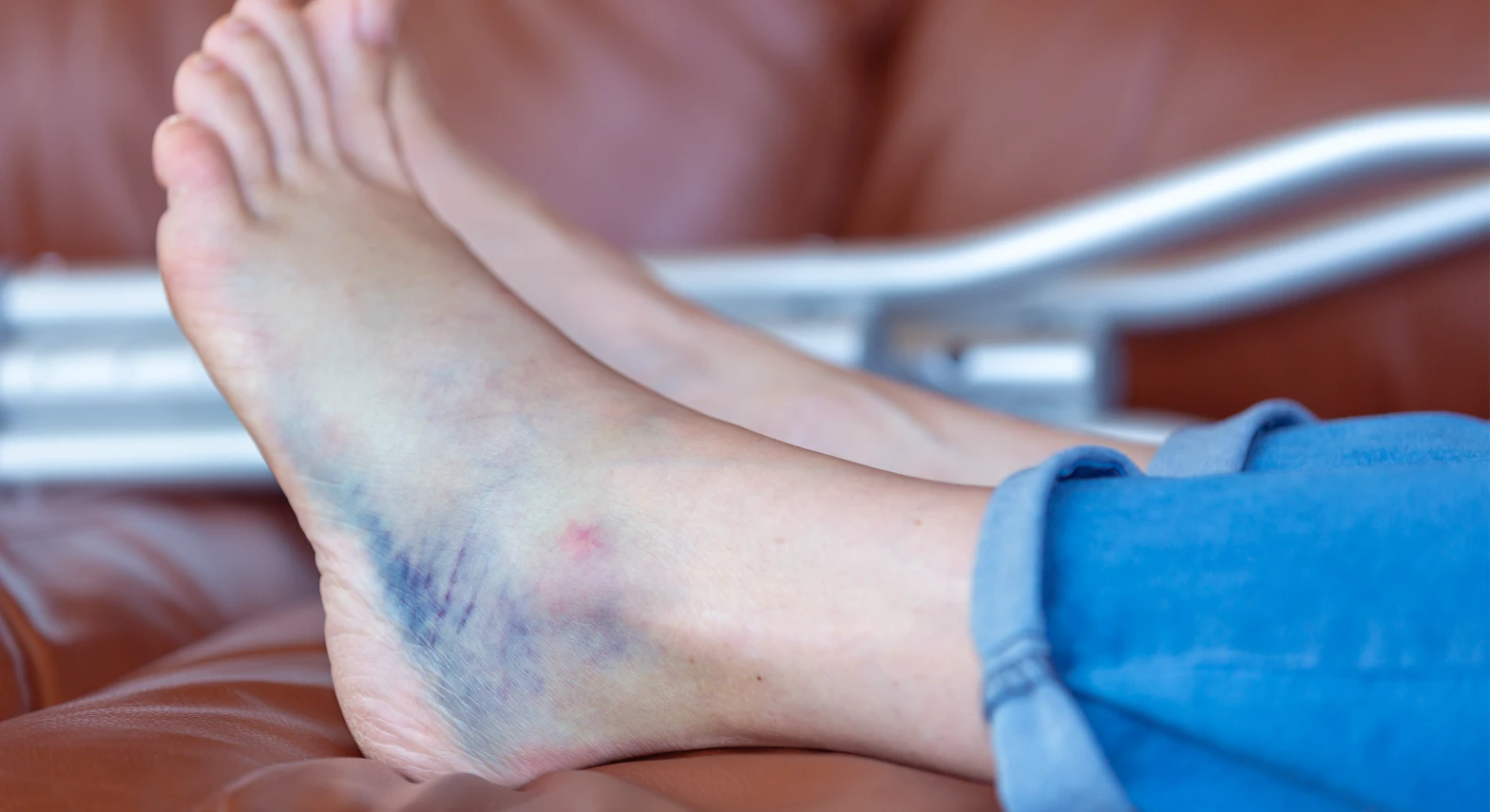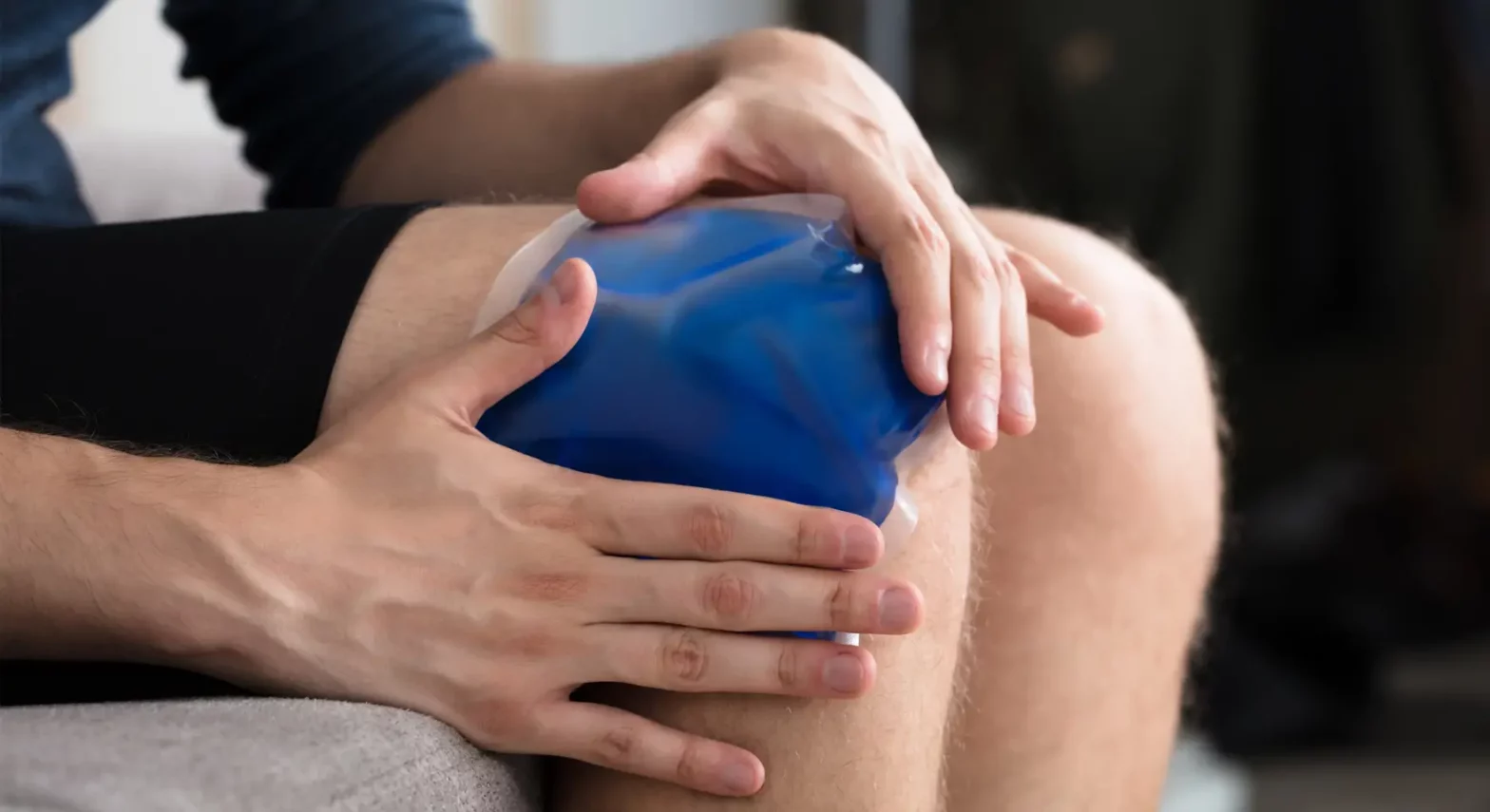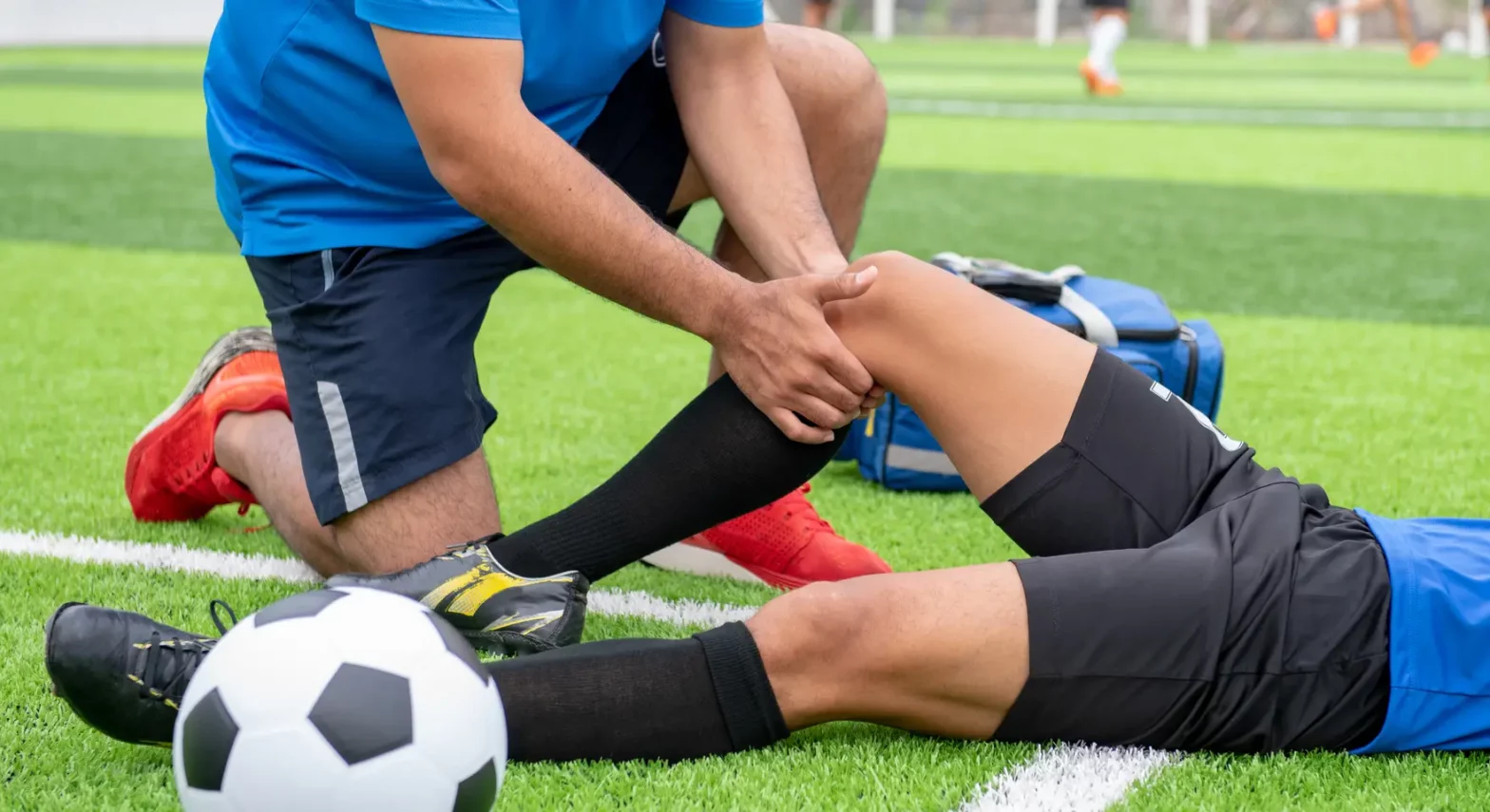December 21st, 2023
Understanding Ankle Sprains

A good way of understanding ankle sprains is to think about the ankle as a strong joint that is supported by a number of ligaments or bands that keep it in place. These ligaments provide the joint stability while still giving us the freedom to move the ankle around with ease and flexibility. But when one of these ligaments is stretched beyond its natural limit and tears, this is known as an ankle sprain. The severity of a sprain depends on the number of ligaments involved and the extent to which the ligaments are torn[1]. If a ligament has been stretched or pulled just beyond its normal boundaries, this is a minor tear or rupture. If the ligament becomes completely separated from the bone, this is a full rupture.
Ankle sprains are extremely common and happen to people of all ages, fitness levels and activity profiles. Additionally, getting an ankle sprain can happen at any time. Whether it’s a sporting injury, a fall or a trip, a sprained ankle can occur for many reasons.
Expert Insights
Understanding Ankle Sprains - J. Carr Vineyard, MD
The good news is that ankle sprains generally heal quickly without the need for extensive medical intervention. Most sprains can be treated by following a conservative management approach of rest, ice and compression. This can be used for straightforward ankle sprains. However, It is important to note that more serious sprains such as full tears or ruptures require some form of medical intervention and advice. This is to ensure that the sprain heals properly.
What happens after we sprain our ankle
When an ankle sprain occurs, it may be accompanied by the feeling of a tear or pop in the joint. This is usually followed by a combination of pain, swelling and bruising at the site of the injury. In general, the biological response following ligament injury can be summarized into three phases: bleeding, inflammation and active repair[2]. During the inflammation phase, tissues around the ankle joint start to feel warm and tender as the inflammatory process begins. At this point, a certain amount of tissue swelling is expected. In the immediate aftermath of a sprain, management should follow the RICE protocol: Rest, Ice, Compression and Elevation. The RICE protocol is used to help manage basic strains and sprains. It is summarized by the following:
-
Rest
Take steps to avoid using the ankle by not placing pressure on the joint. It is a good idea to rest the injury for at least a few days immediately following the event that caused the sprain. -
Ice-Cold therapy
Applying an ice-pack or cold compress can immediately help with swelling. It does so by restricting blood flow to the area and slowing down cellular metabolism. Applying cold immediately after the injury and then several times a day for 20 to 30 minutes at a time will keep swelling down, especially in the days following the injury. -
Compression
Bandages, dressings or ace-wraps can be used to provide support and immobilize the joint. Immobilization helps to keep the joint in place and protect it from excessive movement. These bandages can also help with swelling and add a layer of protection to ensure the ankle is not accidentally hit or banged against other objects or items. -
Elevation
Elevating an injury just after a sprain occurs will help reduce blood flow and swelling to the area. For ankle sprains, keep the legs elevated while seated or reclining so that excess fluid does not collect around the joint.
Additionally, over the counter pain medication such as ibuprofen may be used to help lessen the pain and discomfort of the sprain itself.
How the healing process unfolds
Active repair is the final part of the healing process and the body starts working on repair of the torn or ruptured ligament right away.
Apart from the elements of rest, ice, elevation and compression, in the initial phases of healing, early movement and mobilization is recommended[3]. After the first 48-72 hours, once healing is well under way, range-of-motion and stretching exercises can be started[3]. This includes basic stretching and ankle strengthening exercises.
The amount of time required for complete recovery will depend on factors such as: Age, fitness level and the extent of the injury. Remember, sprains can range from tiny tears in the ligament fibers to complete rupture. A complete rupture will require a greater length of time to heal, usually a few months, whereas a minor tear can take 3-6 weeks[3].
In the weeks following the injury, if your swelling is chronic, continues to remain painful or is still present, despite using these techniques, speak to a doctor. The sprain may not be healing effectively or there may be underlying damage to the area. A doctor will be able to examine the ankle and order diagnostic tests such as an X-ray or MRI. This might be necessary to rule out a fracture or injury to other tendons and cartilage that may have occurred. A doctor may also recommend further treatment options such as a temporary cast, strengthening exercises or physiotherapy.
Find an Orthopedic Doctor in Your Area





